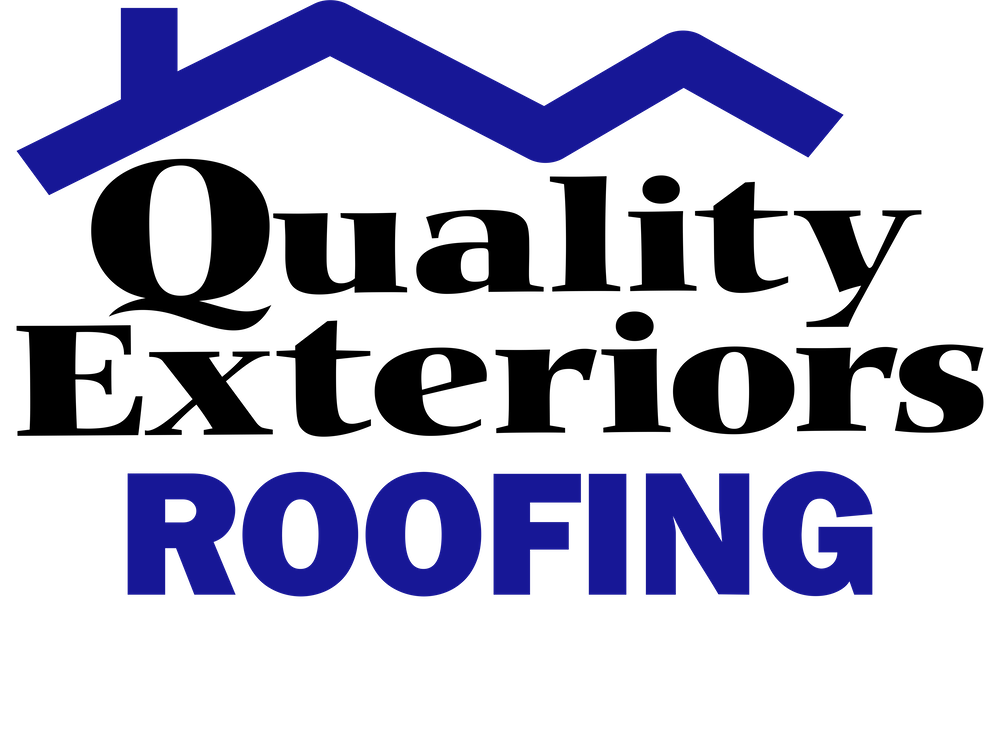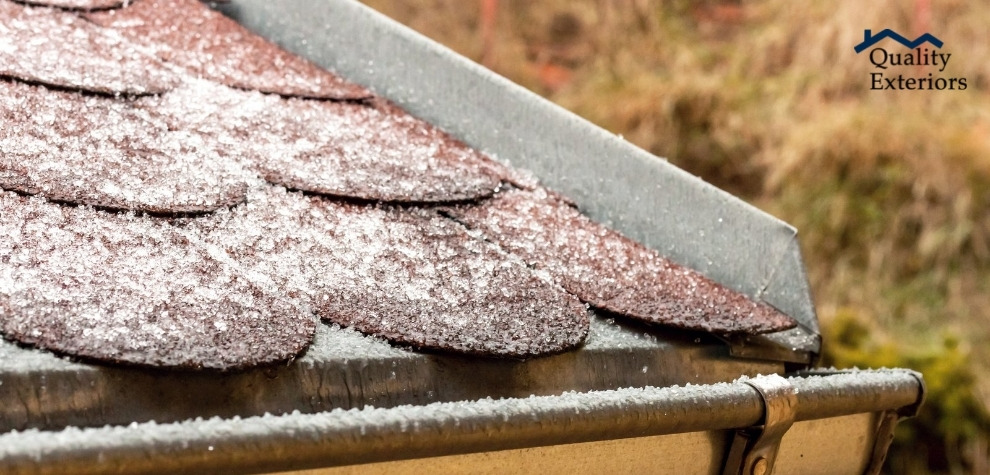People who live in areas with cold winters know that it is best to roof their homes in the spring, summer, and early fall. That’s when the sun is out longer, and the temperatures are just right. Most roofing customers budget and prepare to install a new roof or replace an old roof during the non-winter seasons. However, sometimes the need for a roof arises at the least convenient time. A homeowner has no choice but to have their roof installed or changed during the cold months.
In this case, you’ll want to make sure you hire a reputable and knowledgeable roofing contractor to install your roof on your most important investment – your home. If an unexpected event leaves you in need of a new roof or roof repair in Shreveport or Bossier City, contact Quality Exteriors at 318-747-1254. We are the place for all of your roofing needs.
How Does Weather Affect Roofing?
The roof is one of your home’s most vulnerable areas. Not only does it shield the home from the different types of weather our area experiences, but it also protects the contents inside. A correctly installed roof will protect your home from the elements, but it will also be the first to be impacted by them.
Five Conditions That Affect Roofs
Rain
Here in Louisiana, rain is a biggie. Rain is the reason everything is so green and lush, but it’s also the source of leaks and damage that occur when wetness makes it into a building or structure. Inspect your roof regularly, especially after heavy rain, to ensure that water is flowing off of it correctly.
Sun
The sun is another culprit. Your roof is exposed to the sun’s ultraviolet rays year-round. Unlike the sunblock we can put on our own skin to protect ourselves, your roof has no such shield, as it is essentially the shield itself. As a result, shingles can become brittle and crack after constant exposure to the sun and UV rays. Even more, damage can result from extreme heat and cold that cause roofing materials to expand and contract.
Wind
Your roof doesn’t need to experience hurricane-force winds to have wind damage. Strong winds can loosen shingles, causing them to break or blister. The shingles on rakes and eaves are very vulnerable to wind, so it’s important that each shingle has the right amount of sealant. Before any serious damage occurs, replacing a missing or damaged shingle is an easy and cost-effective option.
Hail
Hail frequently comes along with strong rainstorms and often causes extensive damage. Continuous, hard-hitting hail wears away the granules on asphalt shingles, eventually shattering the shingle. When the shingles are worn down or fractured, the region beneath them is exposed. When this happens, the hail damages the area beneath the shingle.
Snow
Finally, there’s snow. Although an unusual occurrence in the Shreveport/Bossier City area, snow does make an appearance from time to time. It’s important to remove snow or ice build-ups on the edges of your roof. That’s because snow and ice are heavy and cause damage to not only your roof but also your gutters.
Can You Replace a Roof in the Winter?
There are challenges that come with installing roofing in cold weather, but it is still a perfectly suitable season to replace your roof. Winter is also a terrific time to obtain a good deal on a new roof, but your roofing contractor may need to wait until the weather is warm enough to schedule an installation date.
Asphalt shingles can be placed successfully in cold weather if a few key adjustments are made to standard procedures:
- Roof shingles must stay warm. Ensuring roofing shingles are heated before installing them is important. Until they are delivered to the homeowner, keep them in a warm garage or warehouse.
- Seal the shingles properly. It’s critical to apply the right shingle sealing process in the winter. The majority of roofing shingles have a thermally activated asphalt sealer. This method uses sunlight to adhere the shingles to the roof, and it can take many weeks for the shingles to fully attach.
The correct amount of sunlight and ambient heat may not be available when your roof is installed, so your roofer may elect to hand-seal the shingles with roofing cement or other adhesives.
Installing Shingles in Cold Weather
When it comes to roofing in cold weather, there are numerous obstacles to overcome. The shingles themselves are the first challenge when installing asphalt shingles on your roof. In cold weather, asphalt shingles lose part of their flexibility, and cutting them is tricky.
In addition, a pneumatic gun’s ability to drive nails into the roof is affected by both the asphalt shingles’ temperature and the humidity in the air. During the winter, over-driving or under-driving fasteners is common. When the temperature gets cooler, the pneumatic gun’s pressure settings for warm weather need adjusting.
Another concern with roofing in cold weather is the use of sealants to keep the shingles affixed to the roof. The sealer keeps the asphalt shingles together and prevents the wind from lifting them. Additionally, heat and sunshine are used to activate sealants, and cold weather prevents sealers from activating right away. In fact, not activating until spring is a possibility. Because of this, winter blow-offs may wreak havoc on roofing shingles. This is reduced by hand-sealing the individual shingles. However, it takes more labor and could raise the roofing cost.
When it comes to roofing materials, keep in mind that shingles are less flexible in colder temperatures, so don’t store them in places where the bundles will get bent or deformed. If possible, keep them flat until they’re needed.
When it comes to roofing in cold weather, basic human nature is also a challenge. Extreme weather conditions cause worker productivity to drop, and quality takes a hit as well. If not supervised effectively, workers may use shortcuts to finish faster. Working on a roof in the winter also requires extra safety precautions because roofs are slicker during this time. This causes the average cost to tear off and replace a roof to skyrocket.
What Temperature Do Shingles Seal?
Shingles will not seal till they reach a temperature of around 70 degrees. The temperature of the roof can be raised by heating the interior of the home and attic airflow. The heat of the roof can also be affected by the sun. Solar radiance heats the shingles even if temperatures are much colder, so it doesn’t have to be 70 degrees out.
Best Temperature to Install Roof Shingles
It would be ideal to roof on a warm and sunny day. Unfortunately, clear skies and pleasant temperatures aren’t in the forecast every day. A certified roofing contractor has the expertise, experience, and equipment to do their work even when roofing in cold weather.
Regardless, temperatures between 70 and 80° F (21-27° C) are ideal for roof construction.
Manufacturer Specifications for Cold
It really is too chilly for roofing in cold weather when temperatures fall below 40° F (4° C). Many roofing materials have adhesive properties that require the sun’s heat to activate. You can wind up with a faulty roof installation if you don’t pay attention to the outside temperature. When the temperature drops below 40° F, the likelihood of a warranty being canceled rises.
Recommendations for Heat
It’s also possible for it to be too hot to properly install and seal shingles. Roof temperatures beyond 100° F, according to most manufacturers, make the sealant too soft and the shingles unstable. Soft sealant won’t harden right away, and the tiles can shift if walked on or disturbed by tools.
Cold Weather Roofing Tips
If it is absolutely necessary to replace or repair your roof during the cold season, there are ways to ensure the best possible installation:
- When roofing in cold weather, clear off harmful dangers like debris and snow. Snow is heavy and makes certain portions of the roof become vulnerable to damage or collapse.
- Before you start working on the roof, make sure there are safety hazards in place.
- Use guardrails if you install a roof in chilly weather. They’ll protect workers from falling off steep slopes.
- Hot boxes designed to heat temperature-sensitive materials like roof shingles are a money-saver. They prevent the freezing of roofing materials without overheating them. The roofing product will be kept between 100°F and 120°F in a hot box.
Need a Roofing Contractor? Contact the Professionals at Quality Exteriors Today!
The Shreveport / Bossier roof installation contractors at Quality Exteriors want to help you with all of your roofing needs, whether it’s metal roof installation, local roof replacement, or roofing in cold weather. We provide all home exterior needs in the Shreveport-Bossier area, including roofing, siding, and windows. Please call us at 318-747-1254 for more information. Our website also allows you to schedule a free home or business inspection!

